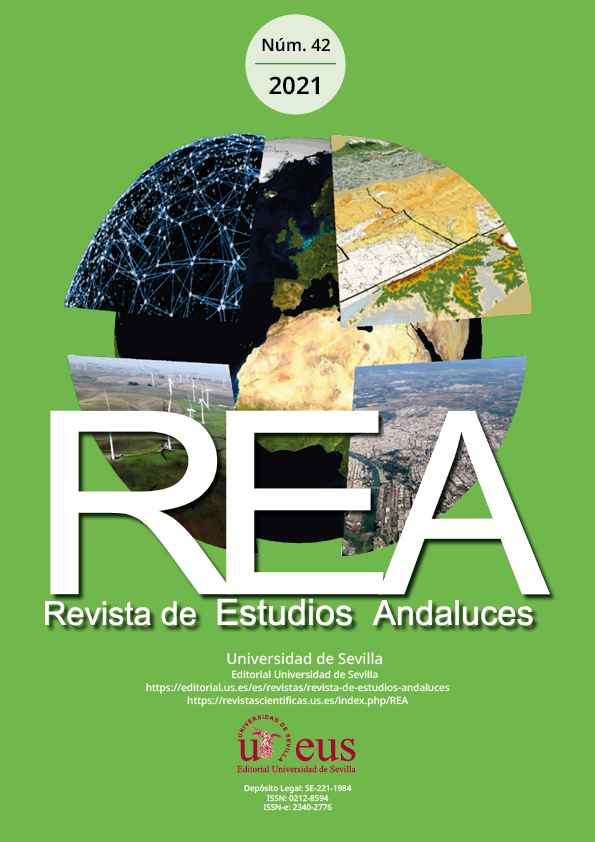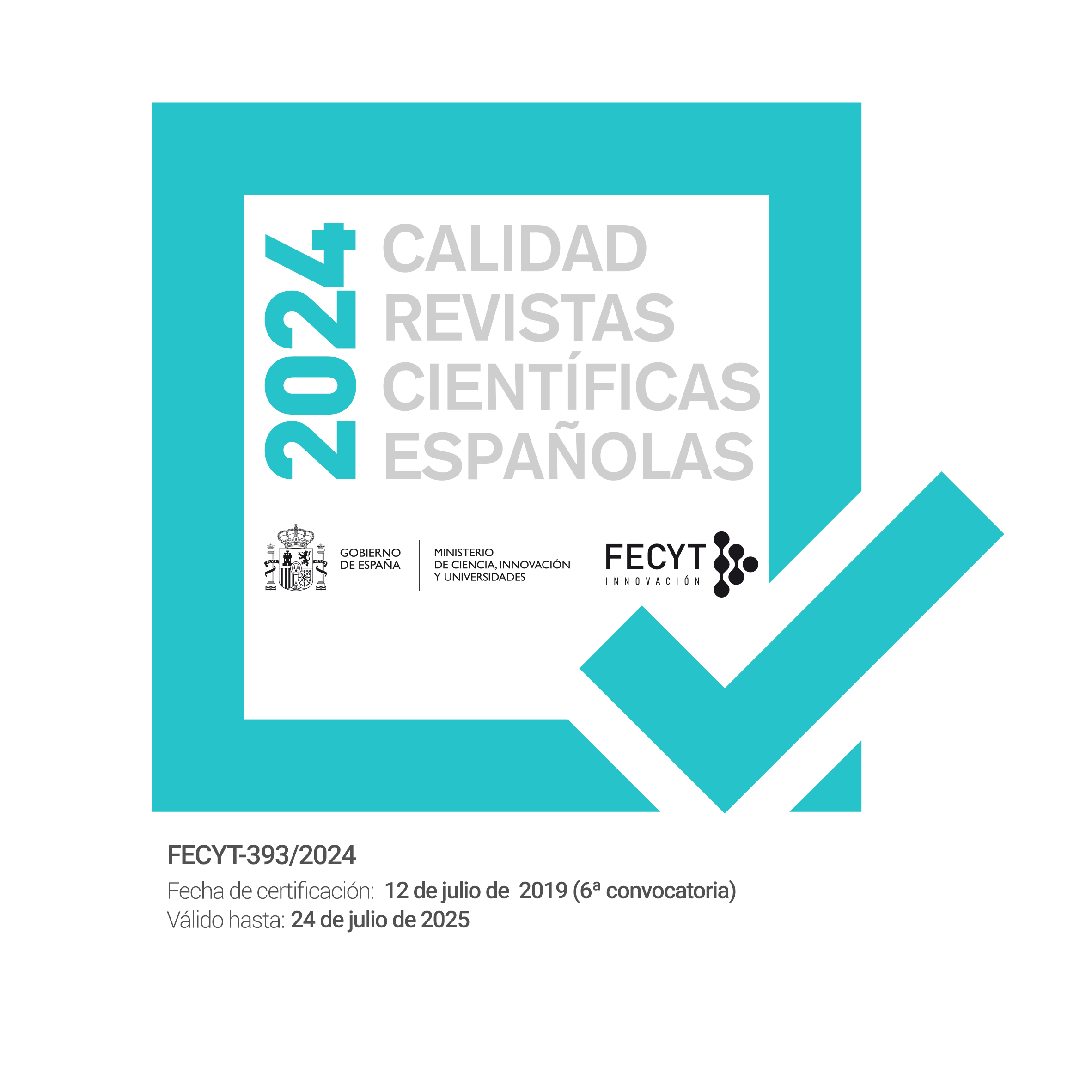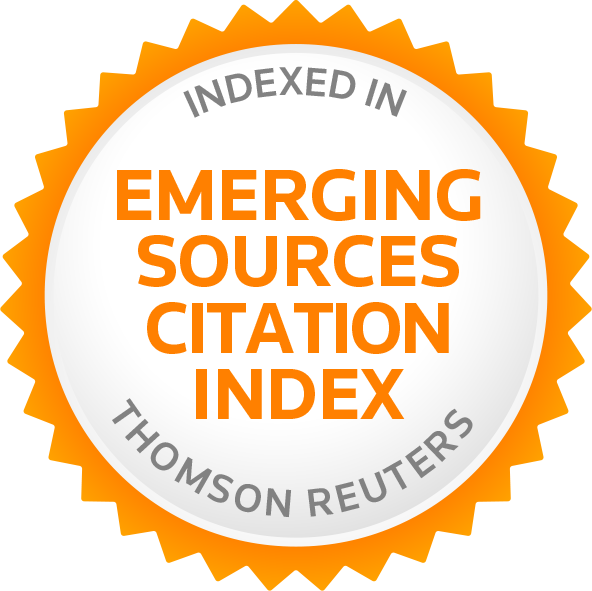A non-compensatory time analysis of material deprivation in the EU
DOI:
https://doi.org/10.12795/rea.2021.i42.06Palabras clave:
Privación, Método cuantitativo, AMPI, Indicador compuesto, EuropaResumen
La crisis financiera y económica que golpea a Europa desde 2009 ha puesto de manifiesto la necesidad de medir de forma más eficaz el impacto que pueden tener ciertas perturbaciones exógenas en el ámbito social.
Para llenar este vacío y proporcionar una herramienta estadística útil para medir los fenómenos que evolucionan en el tiempo, realizamos un análisis temporal no compensatorio de la privación material en Europa mediante el método cuantitativo conocido como Índice de Mazziotta y Pareto Ajustado (IAM). La privación material es un indicador para identificar a los grupos de personas que más sufren en un entorno específico. Consideramos que la privación material es la suma del estrés económico y la carencia forzosa de bienes duraderos. Utilizando los datos de Eurostat EU-SILC, pretendemos determinar qué países han sufrido la mayor privación material e identificar grupos de privación. También determinamos cómo evoluciona la privación material a lo largo del tiempo, desde 2005 hasta 2019. Posteriormente, a través del Análisis de Influencia, se evalúa la robustez del índice obtenido. Nuestros resultados muestran que la brecha de privación material entre los países del Este y del Mediterráneo y el resto de países, que ya existía antes de la crisis económica, parece haberse ampliado en los años transcurridos hasta 2015.
Descargas
Citas
Alaimo, L. S. & Maggino, F. (2020). Sustainable Development Goals indicators at territorial level: Conceptual and methodological issues. The Italian perspective. Social Indicators Research. https://doi.org/10.1007/s11205-019-02162-4
Alaimo, L.S., Arcagni, A., Fattore, M. & Maggino, F. (2020 a). Synthesis of Multi-indicator System Over Time: A Poset-based Approach. Social Indicators Research. https://doi.org/10.1007/s11205-020-02398-5
Alaimo, L. S., Ciacci, A. & Ivaldi, E. (2020 b). Measuring sustainable development by non-aggregative approach. Social Indicators Research. https://doi.org/10.1007/s11205-020-02357-0
Alkire S, & Foster J. (2011). Counting and multidimensional poverty measurement. Journal Public Economics, 95, 476–487. https://doi.org/10.1016/j.jpubeco.2010.11.006
Atkinson A.B. (1970). On the measurement of inequality. Journal of Economic Theory, 2(3), 244–263. https://doi.org/10.1016/0022-0531(70)90039-6
Bartley M. & Blane D. (1994). Commentary: Appropriateness of deprivation indices must be ensured. British Medical Journal, 309(6967), 1479. https://doi.org/10.1136/bmj.309.6967.1479
Bianchi, A. & Biffignandi, S. (2020). Workplace Social Environment Indicator: A Comparative Analysis of European Regions. Social Indicators Research. https://doi.org/10.1007/s11205-020-02344-5
Bossert W., Chakravarty S.R. & D’Ambrosio C. (2012). Poverty and time. The Journal of Economic Inequality, 10, 145–162. https://doi.org/10.1007/s10888-011-9175-2
Bossert W, Chakravarty S.R. & D’Ambrosio C. (2013). Multidimensional poverty and material deprivation with discrete data. Review of Income and Wealth, 10, 29–43. https://doi.org/10.1111/j.1475-4991.2012.00519.x
Bossert, W. & D’Ambrosio, C. (2019). Intertemporal Material Deprivation: A Proposal and an Application to EU Countries. In I. Dasgupta & M. Mitra (eds.) Deprivation, Inequality and Polarization. Economic Studies in Inequality, Social Exclusion and Well-Being. Springer. https://doi.org/10.1007/978-981-13-7944-4_2
Brulé, G. & Maggino, F. (2017). Towards more complexity in subjective well-being studies. In G. Brulé & F. Maggino (eds.) Metrics of subjective well-being: Limits and improvements (pp. 1–17). Springer. https://doi.org/10.1007/978-3-319-61810-4_1
Bruzzi, C., Ivaldi, E. & Landi, S. (2020). Non-compensatory aggregation method to measure social and material deprivation in an urban area: relationship with premature mortality. European Journal of Health and Economics, 21(3), 381-396. https://doi.org/10.1007/s10198-019-01139-x
Calandrino, M. (2003). Low-income and Deprivation in British Families: An Exploratory Analysis of the ‘consistent Poverty’ Approach to Poverty Measurement Using Data for Great Britain Drawn from the Families and Children Study: a Study Carried Out on Behalf of the Department for Work and Pensions. Department for Work and Pensions.
Carr Hill, R., Jamison, J., O’reilly, D., Stevenson, M. & Reid, J. (2002). Risk adjustment for hospital use using social security data: cross sectional small area analysis. British Medical Journal, 324-390. https://doi.org /10.1136/bmj.324.7334.390
Castairs, V. & Morris., R. (1991). Deprivation and Health in Scotland. Aberdeen University Press.
Chaaban, J., Irani, A. & Khoury, A. (2016). The Composite Global Well-Being Index (CGWBI): A new multi-dimensional measure of human development. Social Indicators Research. https://doi.org/10.1007/s11205-015-1112-5
Chakravarty, S.R., Mukherjee, D. & Ranade, R. (1998). On the family of subgroup and factor decomposable measures of multidimensional poverty. Research on economic inequality: a research annual, 8, 175–194.
Ciacci, A., Ivaldi, E. & Soliani, R. (2021). A potential business environment of a smart cities: a subjective approach. Strategic Outlook. In H. Dinçer & S. Yüksel (eds.) Business and Finance Innovation: Multidimensional Policies for Emerging Economies (pp. 11-23). Emerald Publishing Limited. https://doi.org/10.1108/978-1-80043-444-820211002
Ciacci, A. & Tagliafico, G. (2020). Measuring the Existence of a Link between Crime and Social Deprivation within a Metropolitan Area. Revista de Estudios Andaluces, 40, 58-77. https://dx.doi.org/10.12795/rea.2020.i40.04
Cuadrado-Roura, J.R., Martin, R. & Rodríguez-Pose, A. (2016). The economic crisis in Europe: urban and regional consequences, Cambridge Journal of Regions, Economy and Society, 9(1), 3–11, https://doi.org/10.1093/cjres/rsv036
Diener, E. & Biswas-Diener, R. (2002). Will money increase subjective well-being? Social Indicators Research, 57, 119–169. https://doi.org/10.1023/A:1014411319119
Diez, H, Lasso de la Vega, C. & Urrutia, A. (2008). Multidimensional unit- and subgroup consistent inequality and poverty measures: some characterization results. Research on Economic Inequality: a Research Annual, 16, 189–211. https://doi.org/10.1016/S1049-2585(08)16009-4
Dutta, I., Roope, L., & Zank, H. (2013). On intertemporal poverty measures: the role of affluence and want. Social Choice and Welfare, 41, 741–762. https://doi.org/10.1007/s00355-012-0709-8
European Commission (2010). Europe 2020: A European Strategy for smart, sustainable and inclusive growth. Communication No. COM (2010) 2020, European Commission. https://ec.europa.eu/eu2020/pdf/COMPLET%20EN%20BARROSO%20%20%20007%20-%20Europe%202020%20-%20EN%20version.pdf
Foster, J. (2009). A class of chronic poverty measures. In T. Addison, D. Hulme & R. Kanbur (eds.) Poverty dynamics: interdisciplinary perspectives (pp. 59-76). Oxford University Press. https://doi.org/10.1093/acprof:oso/9780199557547.003.0003
Fura, B., Wojnar, J. & Kasprzik, B. (2017). Ranking and classification of EU countries regarding their levels of implementation of the Europe 2020 strategy. Journal of Cleaner Production, 165, 968-979. https://doi.org/10.1016/j.jclepro.2017.07.088
Fusco, A., Guio, A. & Marlier, E. (2013). Building a Material deprivation index in a multinational context: lessons from the EU experience. In V. Bérenger & F. Bresson (eds) Poverty and Social Exclusion around the Mediterranean Sea (.), Chapter 2. https://doi.org/10.1007/978-1-4614-5263-8_2
Gini, C. (1912). Variabilità e Mutuabilità. Contributo allo Studio delle Distribuzioni e delle Relazioni Statistiche. C. Cuppini.
Guio, A.C. (2009). What can be learned from deprivation indicators in Europe? Eurostat methodologies and working paper. Eurostat, Luxembourg. https://ec.europa.eu/eurostat/documents/3888793/5845041/KS-RA-09-007-EN.PDF.pdf/6d80bc28-534a-4fae-9783-9983e05ca20a?t=1414779512000. Accessed on June 12, 2021.
Israel, S., & Spannagel, D. (2019). Material deprivation in the EU: a multy-level analysis on the influence of decommodification and defamilisation policies. Acta Sociologica, 62(2), 152-173. https://doi.org/10.1177/0001699318778735
Ivaldi, E. & Testi, A. (2011). Genoa index of deprivation (GDI): An index of material deprivation for geographical areas. In C. M. Baird (ed.), Social indicators: Statistics, trends and policy development. Nova Science Publishers.
Ivaldi, E. & Ciacci, A. (2020). Measuring level of technological infrastructure in smart cities a non-compensatory approach. In H. Dinçer and S. Yüksel (eds.), Strategic Priorities in Competitive Environments. Multidimensional Approaches for Business Success. Springer. https://doi.org/10.1007/978-3-030-50131-0_5
Ivaldi, E., Parra Saiani, P., Primosich, J.J. & Bruzzi, C. (2020 a). Health and Deprivation: A New Approach Applied to 32 Argentinian Urban Areas. Social Indicators Research. https://doi.org/10.1007/s11205-020-02369-w
Ivaldi, E., Penco, L., Isola, G. & Musso, E. (2020 b). Smart Sustainable Cities and the Urban Knowledge-Based Economy: A NUTS3 Level Analysis. Social Indicators Research 150, 45–72. https://doi.org/10.1007/s11205-020-02292-0
Ivaldi, E., Ciacci, A. & Soliani, R. (2020 c). Urban deprivation in Argentina: a POSET analysis. Papers in Regional Science, 99(6), 1723-1747. https://doi.org/10.1111/pirs.12555
Jarman, B. (1983). Identification of underprivileged areas. British Medical Journal, 286, 1705-1709. https://doi.org/10.1136/bmj.286.6379.1705
Lancaster, G. & Green, M. (2002). Deprivation, ill-health and the ecological fallacy, Journal Royal Statistic Society A, 165(2), 263-278. https://doi.org/10.1111/1467-985X.00586
Landi, S., Ivaldi, E. & Testi, A. (2018). Measuring Change Over Time in Socio-economic Deprivation and Health in an Urban Context: The Case Study of Genoa. Social Indicators Research, 139, 745–785. https://doi.org/10.1007/s11205-017-1720-3
Lokar, K., Zagar, T. & Zadnik, V. (2019). Estimation of the Ecological Fallacy in the Geographical Analysis of the Association of Socio-Economic Deprivation and Cancer Incidence. International Journal of Environmental Research and Public Health, 16, 296. https://doi.org/10.3390/ijerph16030296
Macintyre, S., Ellaway, A. & Cummins, S. (2002). Place effects on health: how we can conceptualise, operationalise and measure them? Social Science and Medicine, 55, 125-139. https://doi.org/10.1016/s0277-9536(01)00214-3
Mack, J. & Lansley, S. (1985). Poor Britain. Allen and Unwin.
Maggino, F. (2017 a). Developing indicators and managing the complexity. In F. Maggino (ed.), Complexity in Society: From Indicators Construction to their Synthesis, Social Indicators Research Series 70. https://doi.org/10.1007/978-3-319-60595-1_5
Maggino, F. (2017 b). Dealing with Syntheses in a System of Indicators. In F. Maggino (ed.), Complexity in Society: From Indicators Construction to their Synthesis, Social Indicators Research Series 70. https://doi.org/10.1007/978-3-319-60595-1_5
Matković, T., Šućur, Z. & Zrinščak, S. (2007). Inequality, poverty, and material deprivation in new and old members of the European Union. Croatian Medical Journal, 48(5), 636-52.
Mazziotta, M. & Pareto, A. (2012). A non-compensatory approach for the measurement of the quality of life. In F. Maggino and G. Nuvolati (Eds.), Quality of life in Italy: Research and reflections, 27–40. Springer. https://doi.org/10.1007/978-94-007-3898-0_3
Mazziotta, M. & Pareto, A. (2016). On a generalized non-compensatory composite index for measuring socio-economic phenomena. Social Indicators Research, 127, 983–1003. https://doi.org/10.1007/s11205-015-0998-2
Mazziotta, M. & Pareto, A. (2018). Measuring Well-Being Over Time: The Adjusted Mazziotta–Pareto Index Versus Other Non-compensatory Indices. Social Indicators Research, 136(3), 967–976. https://doi.org/10.1007/s11205-017-1577-5
Mazziotta, M. & Pareto, A. (2020). Composite Indices Construction: The Performance Interval Approach. Social Indicators Research. https://doi.org/10.1007/s11205-020-02336-5
Murtagh, F. & Legendre, P. (2014). Ward’s Hierarchical Agglomerative Clustering Method: Which Algorithms Implement Ward’s Criterion? Journal of Classification 31, 274–295. https://doi.org/10.1007/s00357-014-9161-z
Norman, P., Gregory, I., Dorling, D. & Baker, A. (2008). Geographical trends in infant mortality: England and Wales, 1970–2006. Health Statistics Quarterly, 40, 18–29.
Norman, P. (2010). Identifying change over time in small area socio-economic deprivation. Applied Spatial Analysis and Policy, 3(2-3), 107-138. https://doi.org/10.1007/s12061-009-9036-6
OECD (2008). Handbook on constructing composite indicators. Methodology and user guide. OECD Publications. https://www.oecd.org/sdd/42495745.pdf. Accessed on June 12, 2021.
Openshaw, S. & Taylor, P.J. (1981). The modifiable areal unit problem. In N. Wrigley & R.J. Bennett (eds.) Quantitative Geography: a British View (pp. 335-350). Routledge and Kegan Paul.
Pantazis, C., Townsend, P. & Gordon, D. (2006). The necessities of life. In C. Pantazis, D. Gordon D. & R. Levitas, Poverty and social exclusion in Britain. The millennium survey, Chapter 4 (pp. 89–122).
Peña, J.B. (1977). Problemas de la medicio´n del bienestar y conceptos afines (Una aplicacio´n al caso espanol). Instituto Nacional de Estadística (INE).
Penco, L., Ivaldi, E., Bruzzi, C. & Musso, E. (2020). Knowledge-based urban environments and entrepreneurship: Inside EU cities. Cities, 96. https://doi.org/10.1016/j.cities.2019.102443
Schuurman, N., Bell, N., Dunn, J.R. & Oliver, L. (2007). Deprivation indices, population health and geography: an evaluation of the spatial effectiveness of indices at multiple scales. Journal of Urban Health, 84(4), 591–603. https://doi.org/10.1007/s11524-007-9193-3
Sen, A. (1999). Development as freedom. Oxford University Press.
Stiglitz, J., Sen, A. & Fitoussi, J.-P. (2009). Report by the Commission on the Measurement of Economic Performance and Social Progress. https://ec.europa.eu/eurostat/documents/8131721/8131772/Stiglitz-Sen-Fitoussi-Commission-report.pdf. Accessed on March 22, 2020.
Townsend, P. (1979). Poverty in the United Kingdom. Allen Lane and Penguin Books. https://doi.org/10.1525/9780520325760
Townsend, P. (1987). Deprivation. Journal of Social Policy, 16(2), 125–146. https://doi.org/10.1017/S0047279400020341
Townsend, P., Phillimore, P. & Beattie, A. (1988). Health and deprivation: Inequality and the North. Croom Helm.
Ward, J.H. (1963). Hierarchical Grouping to Optimize an Objective Function, Journal of the American Statistical Association, 58, 236–244. https://doi.org/10.1080/01621459.1963.10500845
Whelan, C.T. & Maître, B. (2013). Material Deprivation, Economic Stress and Reference Groups in Europe: An Analysis of EU-SILC 2009. European Sociological Review, 29(6), 1162–1174. https://doi.org/10.1093/esr/jct006
Descargas
Publicado
Cómo citar
Número
Sección
Licencia
Derechos de autor 2021 Revista de Estudios Andaluces

Esta obra está bajo una licencia internacional Creative Commons Atribución-NoComercial-SinDerivadas 4.0.
La edición electrónica de la Revista de Estudios Andaluces se ofrece en acceso abierto desde el número 28 publicado en 2011 hasta la actualidad. Las ediciones impresa y electrónica de esta Revista son editadas por la Editorial de la Universidad de Sevilla, siendo necesario citar la procedencia en cualquier reproducción parcial o total.
La Revista de Estudios Andaluces no cobra tasas por el envío de trabajos, ni tampoco cuotas por la publicación de sus artículos. La Revista es gratuita desde el momento de la publicación de cada número y sus contenidos se distribuyen con la licencia “CreativeCommons Atribución-NoComercial-SinDerivar 4.0 Internacional” , que permite al usuario de la Revista de Estudios Andaluces criterios que cumplen con la definición de open access de la Declaración de Budapest en favor del acceso abierto. Puede consultar desde aquí la versión informativa y el texto legal de la licencia. Esta circunstancia ha de hacerse constar expresamente de esta forma cuando sea necesario.







